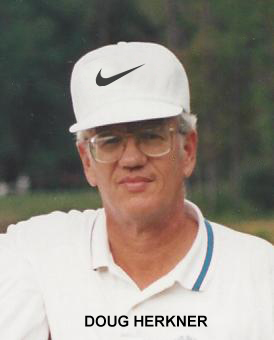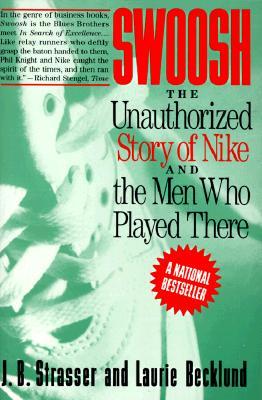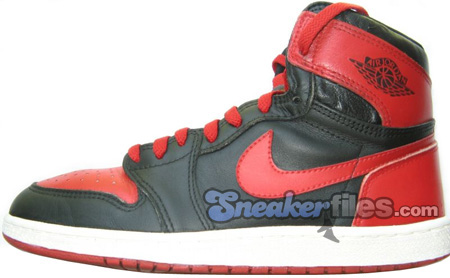Just Do It!
What is it about the sales process that has people so intrigued? It may be the only business area that has been examined extensively not only in an abundance of how-to texts, but in literature, theater, and on the stage. The mystery around how success in sales is achieved may play a part. Why do some people excel while others struggle? Is it an innate ability or a skill that can be acquired through training?
At the root of all business transactions, mastering the art of a sale is key to business success; something that leaders and organizations have long realized and endeavored to achieve. So what makes a good salesperson and maybe more importantly, a good sales manager? Although the pioneers of American salesmanship may never have thought about sales in terms of specific behaviors, recognizing what behaviors contribute to success enables managers to provide feedback to their sales force to help them improve. Behavior professionals, for example, observe the actions of top performers and coach others to replicate effective sales behavior.
In what follows, ADI captures insights from a sales professional with thirty-seven years’ experience to provide a look at the behaviors most critical to selling, along with some interesting history of Nike’s rise from Phil Knight’s father’s garage to a global athletic footwear, apparel, and equipment giant.
 Doug Herkner began his sales career as a manufacturer’s sales rep in the fast-paced emerging days of a company that hit the ground running in 1964—Blue Ribbon Sports—today known worldwide as Nike.
Doug Herkner began his sales career as a manufacturer’s sales rep in the fast-paced emerging days of a company that hit the ground running in 1964—Blue Ribbon Sports—today known worldwide as Nike.
 Nike’s journey, related in the bestseller Swoosh: The Unauthorized Story of Nike and the Men Who Played There, is an American success story that Herkner played a role in from its’ early beginnings. “Phil Knight [Nike’s founder] started with five hundred bucks in his father’s garage and built it into a multibillion dollar corporation; an amazing accomplishment,” says Herkner. For that type of growth, sales was of course a key factor, and Herkner and other manufacturer’s reps, such as Joseph Marrinan, Nike’s first sales rep, were the people that worked to take Nike from a $50,000 company to a $65 million company. Herkner, who worked for Nike for 16 years, revealed that although Knight often credited the product itself for his success, he didn’t micromanage and let the sales professionals do their jobs. He was also accessible. Herkner remembers that he could pick up the phone and call Knight without going through a firewall; they even played tennis together on occasion.
Nike’s journey, related in the bestseller Swoosh: The Unauthorized Story of Nike and the Men Who Played There, is an American success story that Herkner played a role in from its’ early beginnings. “Phil Knight [Nike’s founder] started with five hundred bucks in his father’s garage and built it into a multibillion dollar corporation; an amazing accomplishment,” says Herkner. For that type of growth, sales was of course a key factor, and Herkner and other manufacturer’s reps, such as Joseph Marrinan, Nike’s first sales rep, were the people that worked to take Nike from a $50,000 company to a $65 million company. Herkner, who worked for Nike for 16 years, revealed that although Knight often credited the product itself for his success, he didn’t micromanage and let the sales professionals do their jobs. He was also accessible. Herkner remembers that he could pick up the phone and call Knight without going through a firewall; they even played tennis together on occasion.
Even though Knight wasn’t crazy about salespeople, he was honest and for the most part, hands off in letting them do their jobs. He also came up with ways to give his sales force the upper hand. Nike rewarded the group with some spectacular and inspirational sales meetings where they learned more about the products. “At the sales meetings they had product development people who were extremely good at presenting the product lines. They did get you revved up about the merchandise and we carried that enthusiasm when we presented the line to our dealers,” he says. Nike also sought out the sales force’s advice on the product, which was definitely positive. “They knew that we were out in the field and we knew what other manufacturers were doing, so they used our input and it was well received,” he says. In fact, Herkner helped with the design of the first Air Jordan shoe, a product that still flies off the shelves today. Asking for and acting on the sales rep’s information gave the sales team a sense of ownership in the product. “Because we were able to provide input, I felt, in a way, that it was my shoe out there on the basketball court,” says Herkner.
field and we knew what other manufacturers were doing, so they used our input and it was well received,” he says. In fact, Herkner helped with the design of the first Air Jordan shoe, a product that still flies off the shelves today. Asking for and acting on the sales rep’s information gave the sales team a sense of ownership in the product. “Because we were able to provide input, I felt, in a way, that it was my shoe out there on the basketball court,” says Herkner.
Herkner found the work itself enjoyable, a hugely powerful natural reinforcer. A love for sports of all kinds guided Herkner’s career. His first job was with A. G. Spalding in New York City, and he almost opened his own sporting goods store as a young man but that wasn’t meant to be. Instead, he was recruited by Marrinan to try and sell an unknown brand of a barely known product: a sports shoe. Pride in the product and loving your job is the first requirement for making a sale. “It was never work for me,” states Herkner. It was always fun to get up in the morning and go. I think that’s the key to why it worked for me. I loved what I was doing. The car engine never turned off. I just kept on going from one place to another,” he comments. “It was really just a fun deal, a lot of good times, but a lot of hard work.”
 Author of the 1993 book, The Art of the Sale: Learning from the Masters about the Business of Life, Philip Broughton stated, “Business can often seem sterile about numbers, about spreadsheets, about strategic reports, but sales makes it really human.” The human part of sales is of course all about behavior and Herkner points out that some of the one-on-one humanity seems to have dissipated in the big-box world of chain retailers. “When I called on customers in the early days of Nike, I knew not only the guy who owned the store, but I knew his wife and kids. I may be wrong, but establishing those good relationships seems to have disappeared.”
Author of the 1993 book, The Art of the Sale: Learning from the Masters about the Business of Life, Philip Broughton stated, “Business can often seem sterile about numbers, about spreadsheets, about strategic reports, but sales makes it really human.” The human part of sales is of course all about behavior and Herkner points out that some of the one-on-one humanity seems to have dissipated in the big-box world of chain retailers. “When I called on customers in the early days of Nike, I knew not only the guy who owned the store, but I knew his wife and kids. I may be wrong, but establishing those good relationships seems to have disappeared.”
As Nike grew, management began to bring the sales force in-house. Herkner survived the waning sense of teamwork and the punishing commission reductions until only the final four of the long-term, independent sales reps remained. He then retired—for the first time—at the age of 48. “You reach a point where it ceases to be fun, and you say, ‘I’ve had enough’ and you move on. That’s what a lot of people did,” he says. But retirement didn’t last long. When Rob Strasser, Nike’s marketing whiz for many years, had a falling out with Knight, he became the head of Adidas America (Nike’s competitor from the get-go) and asked Herkner to fill the role of Eastern Sales Manager and then Vice President of Sales. After a few years in that position, Herkner retired again, but later went back to work, serving as the Vice President of Sales and Business Development for Fila USA before his final retirement in 2001. These experiences gave him the ability to offer advice from a management perspective.
 He noted as a sales executive that the sales force was often overloaded with paperwork. “Toward the end of my career, the guys spent more time filling out reports than they did selling. Somewhere there’s a happy medium because you certainly want to know what’s going on in the field but I think people today tend to strangle the sales force by having them give a whole lot of information that I’m not so sure anybody looks at, to be honest with you,” he says. Instead, managers should be asking what they can do to make their team’s job easier, faster, and better. From either side of the sales equation, trust and consideration should be a mainstay, according to Herkner. “I treated the people as well as I could, as nice as I could and fairly. I treated them just like I wanted to be treated and I think that goes a long way. I always tried to keep it simple and, hopefully, the people who worked for me enjoyed working for me and going out and making the sale.”
He noted as a sales executive that the sales force was often overloaded with paperwork. “Toward the end of my career, the guys spent more time filling out reports than they did selling. Somewhere there’s a happy medium because you certainly want to know what’s going on in the field but I think people today tend to strangle the sales force by having them give a whole lot of information that I’m not so sure anybody looks at, to be honest with you,” he says. Instead, managers should be asking what they can do to make their team’s job easier, faster, and better. From either side of the sales equation, trust and consideration should be a mainstay, according to Herkner. “I treated the people as well as I could, as nice as I could and fairly. I treated them just like I wanted to be treated and I think that goes a long way. I always tried to keep it simple and, hopefully, the people who worked for me enjoyed working for me and going out and making the sale.”
He makes two suggestions: always put yourself in the customer’s shoes (in this case almost literally) and establish a trusting relationship, and you can’t go wrong; keep the juices flowing by realizing that every call is a different person, which makes each situation interesting. Also, Herkner still offers what he says should not have to be stated: “Asking for the order is pretty basic stuff, but in today’s day and age a lot of salespeople don’t ask for the order. They forget the reason they’re there!”
With that said, what sales story could be complete without an anecdote. Herkner remembers this one from his early days shadowing his mentor Joseph Marrinan, who was actually known in the business as “Nike Joe”:
 Bottom line, even though Herkner doesn’t spell it out in behavioral terms, the art of the sale does boil down to observable and teachable behaviors: management support and accessibility, reinforcement from the job itself, working as a team, knowledge sharing, listening to and empathizing with customer needs, asking for and providing feedback to your team, asking for the sale, following through, treating your coworkers and employees with respect, dogged persistence, and of course, fun. Herkner states that the most difficult role for a manager is figuring out if you have the right people in sales positions. “I think it’s very difficult to take a person that’s not a salesperson and make them a salesperson,” he says. “But I will concede that if the person is right for sales, you can make them a better salesperson.”
Bottom line, even though Herkner doesn’t spell it out in behavioral terms, the art of the sale does boil down to observable and teachable behaviors: management support and accessibility, reinforcement from the job itself, working as a team, knowledge sharing, listening to and empathizing with customer needs, asking for and providing feedback to your team, asking for the sale, following through, treating your coworkers and employees with respect, dogged persistence, and of course, fun. Herkner states that the most difficult role for a manager is figuring out if you have the right people in sales positions. “I think it’s very difficult to take a person that’s not a salesperson and make them a salesperson,” he says. “But I will concede that if the person is right for sales, you can make them a better salesperson.”
| Reinforcing key sales behaviors is critical to sales success in today’s business environment. Learn more about how ADI works with sales leaders to identify, shape, and reinforce key behavior, coach with precision and consistency and build client relationships. Additional resources include: Precision Selling and Rapid Change: Immediate Action for the Impatient Leader. |
Resources
Strasser, J.B. and Becklund, Laurie. Swoosh: The Unauthorized Story of Nike and the Men Who Played There. New York, NY: HarperCollins Publishers, Inc., 1993.
Broughton, Philip Delves. The Art of the Sale: Learning From the Masters about the Business of Life. New York, NY: The Penguin Press, 2012.
Published October 31, 2012


